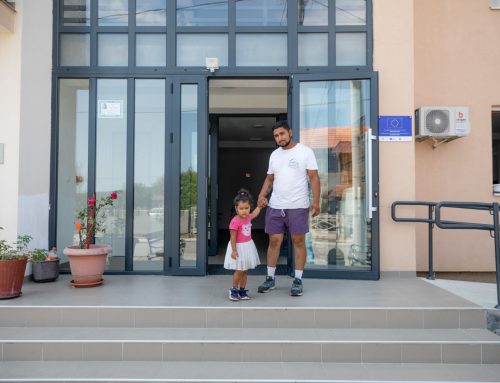In one year of their existence, 20 local mobile Roma inclusion teams, have facilitated enrolment of 600 Roma children in preschool institutions across Serbia, while over 749 procedures for delayed birth certificates were initiated. In 2014/2015 school year, Roma pupils obtained 535 scholarships, and according to the announcement, additional 475 will be provided.
These are the first results of the project “We Are Here Together – European Support for Roma Inclusion” worth 4.8 million euros, funded by the European Union and implemented by OSCE Mission to Serbia, as stated at the presentation of results achieved by mobile teams, titled “Achievements, Development, Perspective”.
Mobile teams are, apart from coordinators, composed of health mediators, pedagogical assistants, social workers and representatives of National Employment Service.
Representative of the EU Delegation to Serbia Yolanda San Jose stressed the importance of all services being coordinated at local level. She assessed the project represented an excellent partnership, and the mobile teams became important factors in the inclusion of Roma.
“More active participation of civil society and Roma NGOs is needed,” said San Jose.
She pointed out that EU was Serbia’s reliable partner in its efforts to integrate Roma better in all parts of the society.
Representative of the Government Office for Human and Minority Rights Suzana Paunovic stressed that the field work and training of local teams would continue, given the tangible results they head achieved.
“The most important is to coordinate services and acquire team work which is essential in order to achieve good results,” Paunovic said.
She added that Roma had access to all information, whereas advice and tailored assistance were obtained directly on the field by professional services.
Head of OSCE Mission to Serbia Peter Burkhardt said the existence of mobile teams significantly improved the lives of Roma.
“This is the best field practice and as such it should continue,” Burkhardt said.
He added that the project should serve as a model for systemic solutions in the work of local self-governments.
Watch the movie about the project




